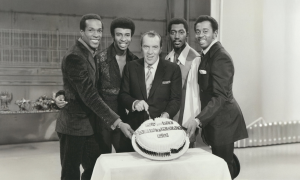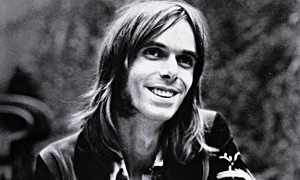Home » Jazz Articles » Film Review » A Night At The Family Dog/Go Ride The Music/West Pole 2-DVD
A Night At The Family Dog/Go Ride The Music/West Pole 2-DVD
 A Night At The Family Dog/Go Ride The Music/West Pole
A Night At The Family Dog/Go Ride The Music/West Pole Mercury Studios
2023
Close to three hours of footage taken from television programs curated by the late Ralph J. Gleason, esteemed journalist, co-founder of
The sequencing of the three sections manifests a certain inescapable logic, a dissection of the subject(s) in reverse order of programming. The segment ""Go Ride The Music,""for instance, belies its title somewhat: watching Jefferson Airplane play live in the studio contrasts with Quicksilver Messenger Service playing in an outdoor festival setting, thereby setting up the two main scenarios of music that had already reached its pinnacle.
As such, it matters less that the former (without drummer Spencer Dryden who appears in other footage) was less of a unified powerhouse than at its prime. Or that the latter, with Dino Valenti back in the lineup after a lengthy hiatus, does not take off on the kind of exploratory improvisations that earned them adulation early in its career (and that's even with the brilliant Nicky Hopkins present on the piano).
Robert N. Zagone's editing stays mostly in time with the music to hold the attention. The varying camera angles, including split-screen and slow-motion also set up the more structured content of "West Pole" (that designation to represent a 'left coast' focal point). Hosted on camera by co-producer Gleason—who introduces some live-in-the-street interviews with music fans outside a venue—the various performance intervals fortunately outnumber the video set pieces; irony or not, these segments feature the lesser known artists, the all-female Ace of Cups and the horn-laden Sons of Champlin (misspelled in the credits). The visual transitions are generally as smooth as the musical ones in the concert excerpts.
There is no question that, as the host states, the urge to experiment in the realm of film was inescapable, but the margin of clarity is wide between the Airplane's "Greasy Heart" and two others by San Francisco stalwarts Grateful Dead and the Steve Miller Band ("Sittin' In Circles" nonetheless a rarity as the Space Cowboy's cover of former partner Barry Goldberg's tune). To simply follow in the footsteps of the imagistic clips from 1967 by The Beatles ("Strawberry Fields Forever" and "Penny Lane") clearly doesn't guarantee a similarly provocative effect.
It's not at all surprising, then, that the most watchable piece on this double-DVD set occurs in the live setting the iconic British quartet had forsaken just a few years prior. Jefferson Airplane and Grateful Dead thrived on the concert stage, as did the most powerful lineup of Santana, circa Abraxas (Columbia, 1970); each of these bands, like the scene they helped foster, were still at, or headed toward, early pinnacles, at least as documented in "A Night at the Family Dog."
Here, not surprisingly, is where the audio quality comes to the fore. With much of its capture by the expert Bob Matthews and now famous Betty Cantor (-Jackson), the mono is most true to life given the original broadcast via public TV. Meanwhile, the 'extrapolated' stereo is merely acceptable even as the similarly configured 5.1 Surround Sound offers a readily-discernible depth.
Intentionally or not, the variable sonics bring focus to the production values in play at San Francisco venue where these bands were filmed in February of 1970. This isn't the lavish and often pre-programmed likes of a Coachella Festival or a Taylor Swift concert. Far from it, as these are examples of concert/stage management in its nascent stages and, as such, may appear archaic compared to today's high-tech offerings.
There's a marked correlation, at least superficially, between the concert settings and the musicianship as well. Tightly arranged as are some JA selections here, such as Grace Slick's "Eskimo Blue Day," improvisation still prevails on "The Ballad of You And Me And Pooneil," for instance, and that very sense of spontaneity may look and/or sound lackadaisical, even borderline sloppy, to those not inclined towards such an impromptu approach.
In an interesting contrast, the Dead's segue from "China Cat Sunflower" to "I Know You Rider" is a model of transitional efficiency, thus rendering even more static the "Super Jam," featuring players from multiple groups in a decidedly non-productive affair,
That interlude is but a minor blemish here, precisely because it's so innocuous. Otherwise, the diversity of the material on the two DVDs, plus its low-key exposition, belies the garish and amateurish artwork adorning the cover of the set (and the poster within). Better that the prose and photos on the cover sleeve had been placed in a more readily accessible position on this package design.
The measured tone of the essay by Toby Gleason, the offspring of the late elder statesman who headed up these projects, is fully in keeping with what's inside A Night At The Family Dog/Go Ride The Music/West Pole.
Tags
About Grateful Dead
Instrument: Band / ensemble / orchestra
PREVIOUS / NEXT
Support All About Jazz
 All About Jazz has been a pillar of jazz since 1995, championing it as an art form and, more importantly, supporting the musicians who make it. Our enduring commitment has made "AAJ" one of the most culturally important websites of its kind, read by hundreds of thousands of fans, musicians and industry figures every month.
All About Jazz has been a pillar of jazz since 1995, championing it as an art form and, more importantly, supporting the musicians who make it. Our enduring commitment has made "AAJ" one of the most culturally important websites of its kind, read by hundreds of thousands of fans, musicians and industry figures every month.
























